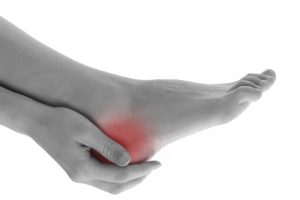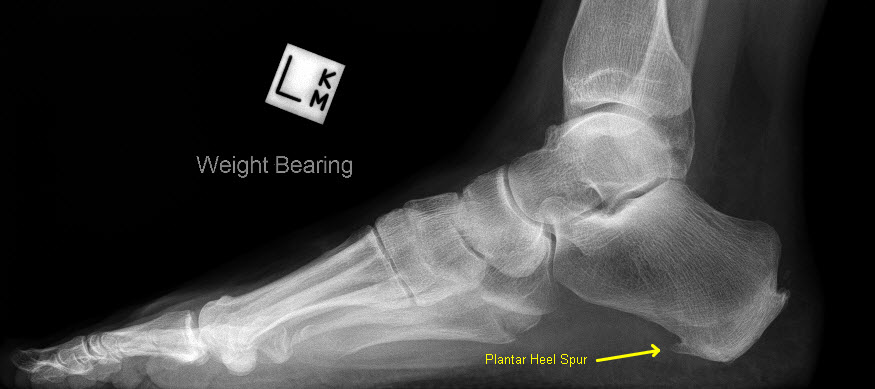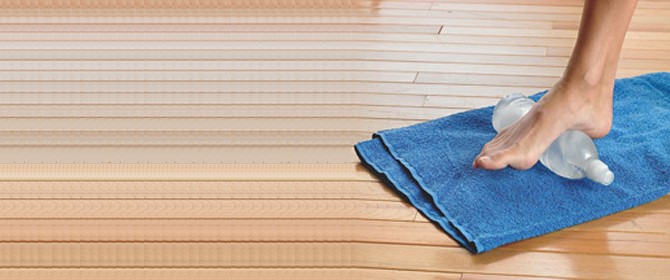Do you suffer with Heel Pain, Plantar Fasciitis or Heel Spurs?
Heel pain can be an incredibly frustrating condition. Pain in the heel can dramatically reduce your ability to walk and function. Simple tasks like keeping up with the kids can get harder. Standing on your feet at work, going for a walk and exercising can be near impossible.
Heel pain can really affect your quality of life and really get you down.
Pain in the heel is usually there getting out of bed in the morning. Being on your feet for long hours at work or at home can make it worse. You may also experience pain after sitting down for a while and then standing again.
Heel Pain Checklist:
- Does your heel or arch hurt when you get out of bed or when you put your foot to the floor first thing in the morning?
- Do you limp for the first few steps in the morning?
- When you warm up and moving does the heel pain ease off?
- Do you get heel pain after sitting or resting and then starting a weight bearing activity?
- Does your heel hurt after going for a jog or playing sport?
- Have you stopped exercising because of your heel pain?
- Is pain in your arch and heel affecting your quality of life?
If this is you, then you’re not alone. Heel pain impacts a significant number of Australian’s every day and is one of the most common conditions that we see.
Is pain in the heel normal?
Having heel pain is not normal. In fact, there is absolutely no such thing as ‘normal’ heel pain. Pain is a warning sign that tissue damage has occurred or is about to occur.
You see, pain in your heel is your body’s way of telling you that something is wrong! If you have heel pain, don’t ignore it, seek professional help. It is unlikely to resolve on its own and the longer you wait to seek treatment the longer and harder it can be to fix.

So why does my heel hurt?
There are many causes of heel pain with the most common being inflammation of the plantar fascia (plantar fasciitis) or degeneration and deterioration of the plantar fascia (plantar fasciosis). Often the mechanical overload from poor foot function (eg flat feet) causes the heel pain. Other contributing factors can include tight calf muscles, recent increase in body weight, poor/soft footwear, sudden increase in sporting activity or poor training methods/technique.
The plantar fascia is the flat fibrous band of tissue (ligament) that connects your heel bone (calcaneus) to your toes. It supports the arch of your foot. When the foot structures are not in the right place (mis-alignment), the plantar fascia can become over-stretched & strained resulting in micro-tears and injury. It is the strain, damage and injury to the tissue that you feel as pain.
What about a heel spur?
When plantar fasciitis / fasciosis has been present for a long time, the heel bone can try to protect itself from the chronic attachment strain by thickening and strengthening the bone (calcification). This effectively gives the plantar fascia something better to “grip” on to.
It’s this bony growth under the heel that we call a heel spur. Heel spurs don’t cause the pain, but if the plantar fascia is pulling excessively on the spur, it can create inflammation. The inflammation is what causes the pain associated with a heel spur.
The key to treatment success?
The key to any treatment success is finding out the ‘why’ of the problem. This means accurate diagnosis and treating the true cause of the pain. Although symptom management can make you feel better fixing the cause is the key to lasting results.
How can you fix your heel pain?
To fix the heel pain you must reduce the strain on the arch and heel tissues. Achieving this allows true healing to occur. Remember, your body is constantly regenerating and repairing itself. It just needs to be able to do this at a speed faster than it is being injured. Get this right and you’ll get better.
By using gentle, ‘hands-on’ specialised techniques called Foot Mobilisation Therapy (FMT), we can correct the joint displacements. This puts the structure of the foot back into the correctly aligned position. When this is combined with specific corrective exercises, it can help the muscles around the heel and arch become flexible and strong again.
Once the foot structures have been re-aligned, the body can work properly and more efficiently allowing the natural healing processes of the body to repair plantar fascia. This allows you to get back to the activities you enjoy!
What about orthotics?
Too often you are told that you need a customised shoe insert (orthotic) to ‘correct the alignment of your feet’. This can be effective, however if you are unable to fit them in all your shoes (common problem for women) or wear them inconsistently then they are unlikely to get a favourable result. This can prevent you from wearing the shoes that you love and enjoying your life again.
In our opinion orthotic shoe inserts are only needed in cases where the foot is hyperflexible and chronically unstable. In these situations external support can be indicated and beneficial. If you have orthotics and are not getting a result, reach out as we are here to help you!
Is there anything I can do at home to help my heel pain?

Yes there are home based activities that you can use to help yourself.
Frozen Ice Bottle and Tennis Ball Exercises
Use a frozen bottle of water and roll your foot over the top for approximately 3 to 5 minutes as needed. This will help stretch the arch tissues and the icing acts as a natural anti-inflammatory. This can be combined with rolling a tennis ball in the arch of your foot at the beginning and end of the day to further stretch the arch tissues.
Check your shoes. Are they supportive and cushioned to take the strain off the bottom of the foot. There are retailers that can help with footwear selection and provide advice in relation to padding and stability as well.
However, the above measures are typically only short-term relievers of the pain. If you do not address the cause of the heel pain and correct the joint displacement, you can continue to have flare ups and ongoing trouble. Remember the key to success and lasting outcomes is to treat the cause of the pain.




